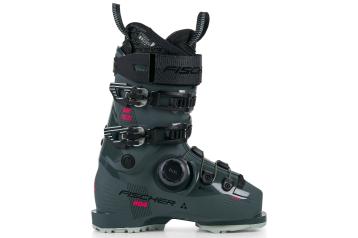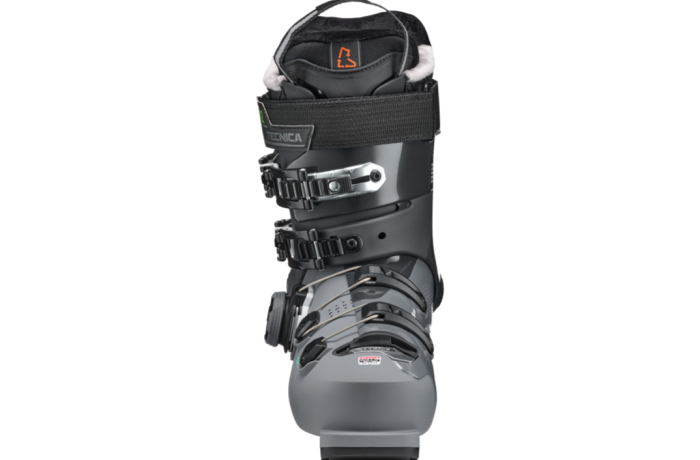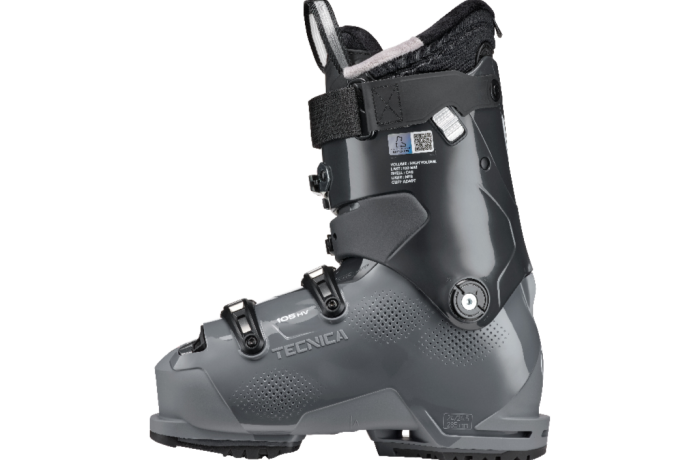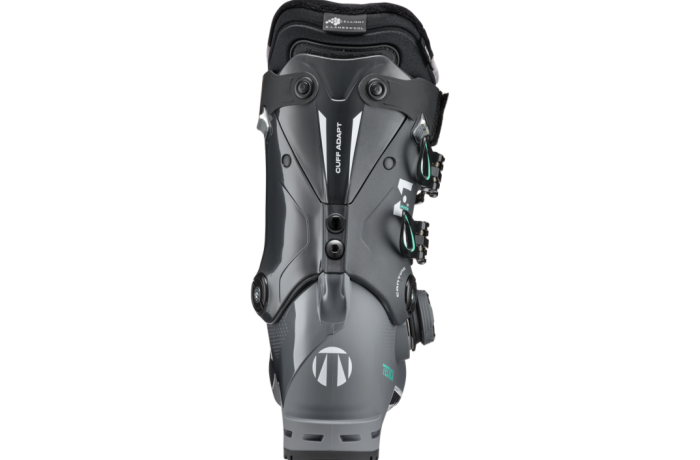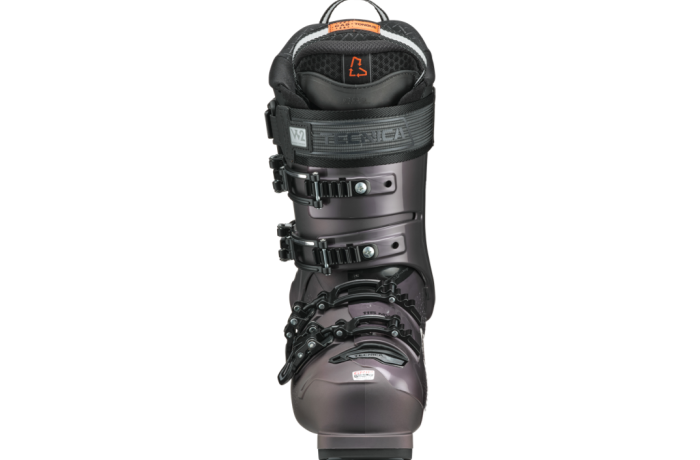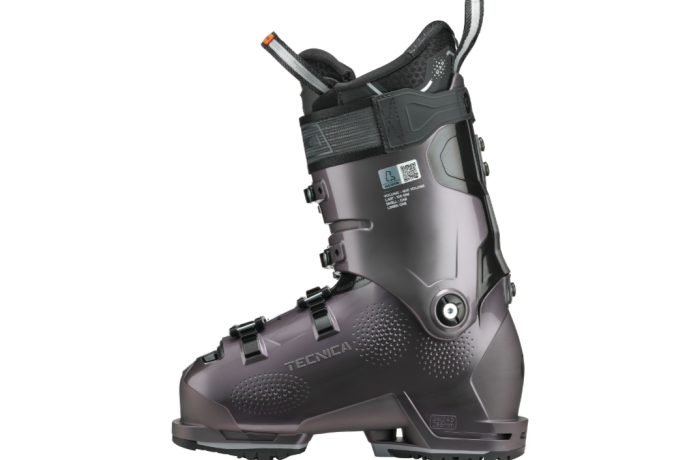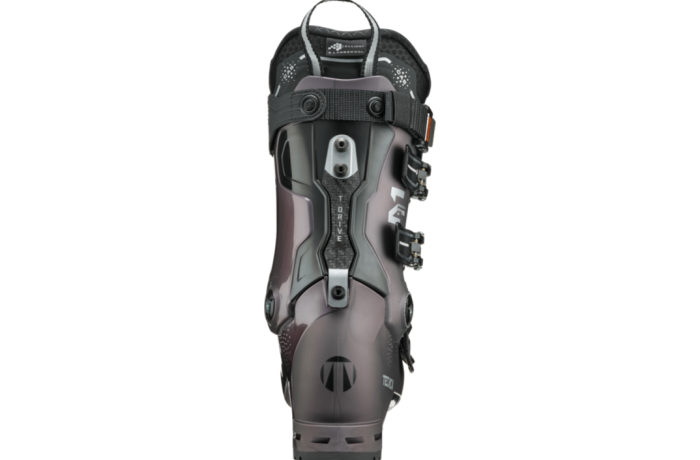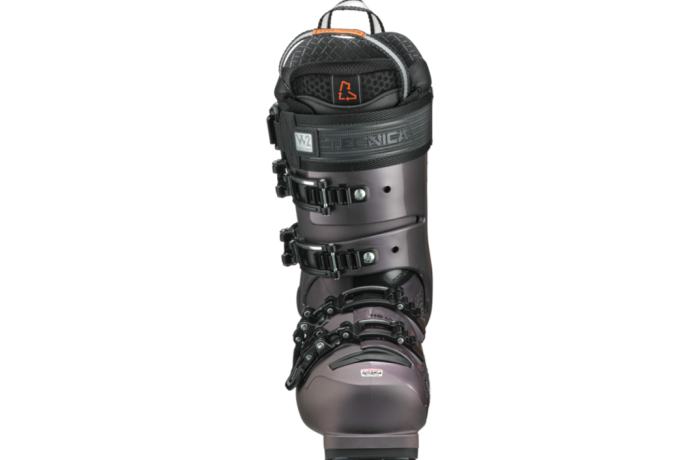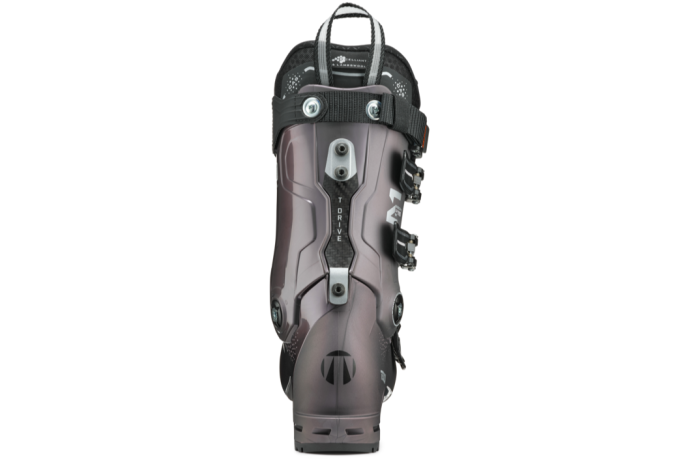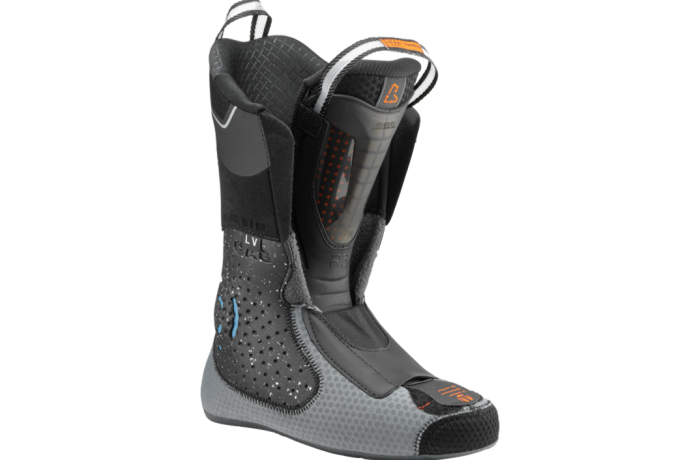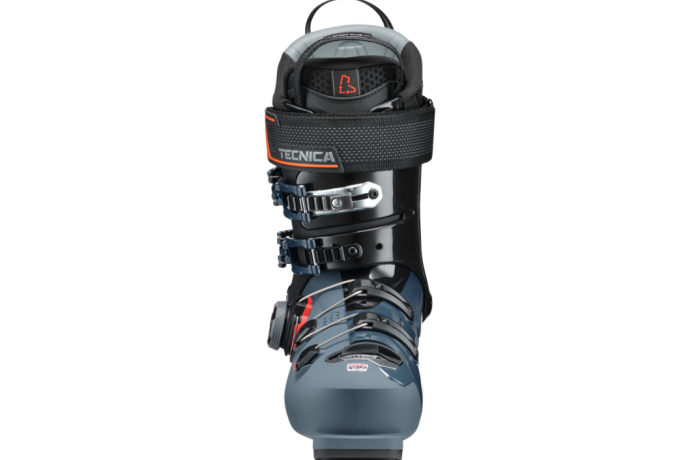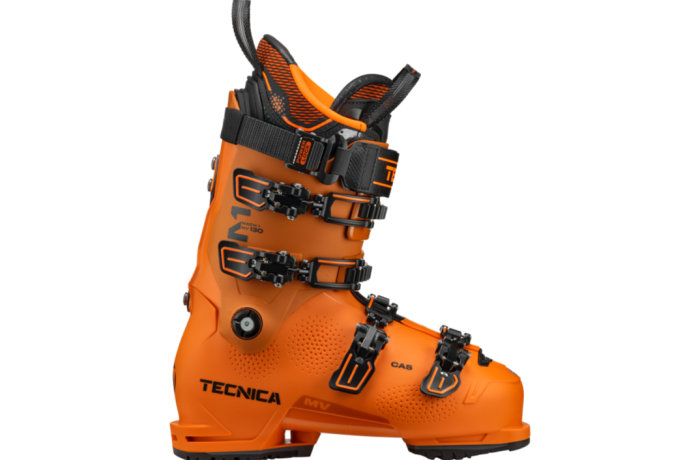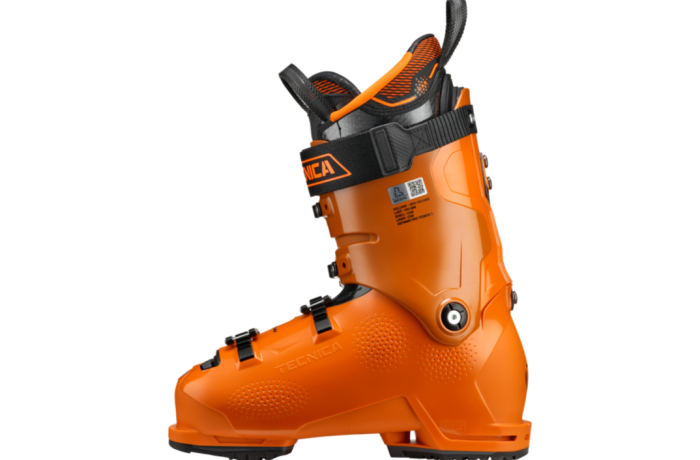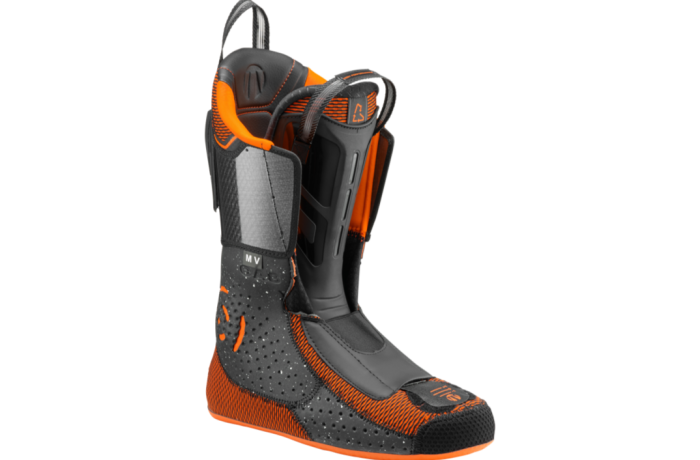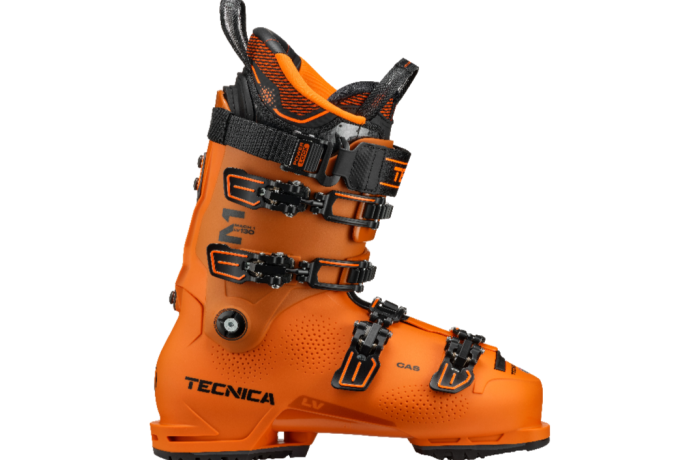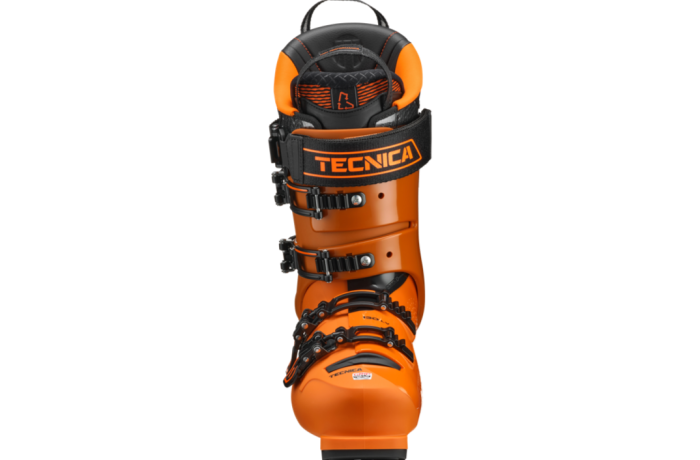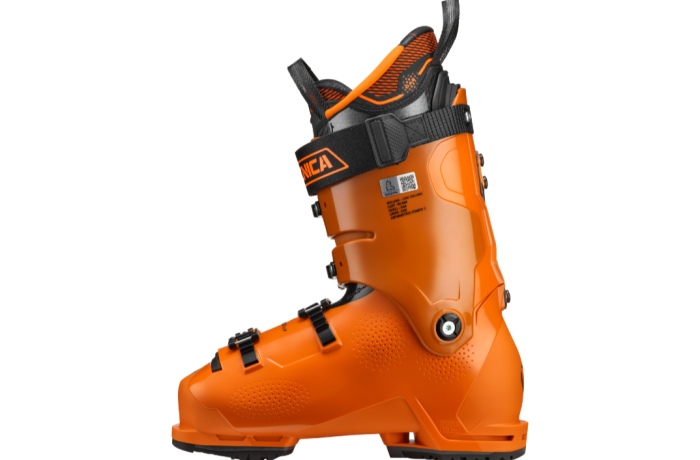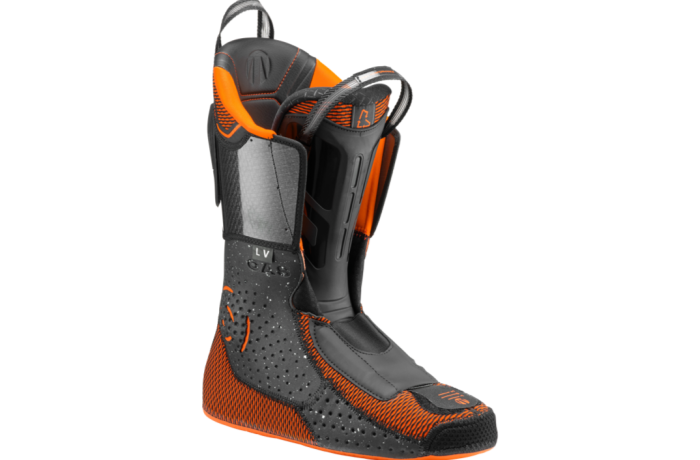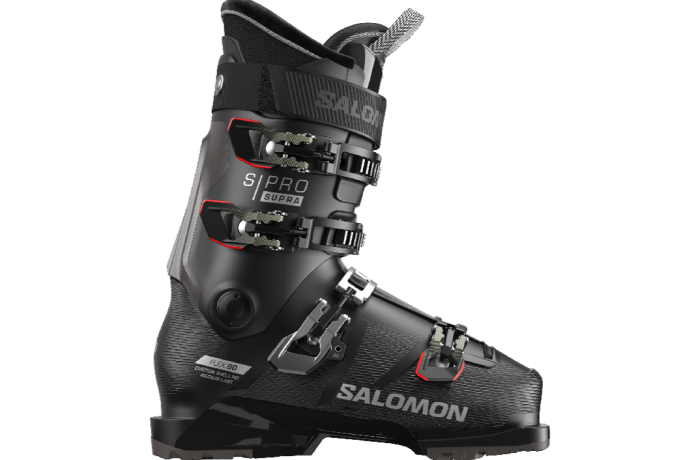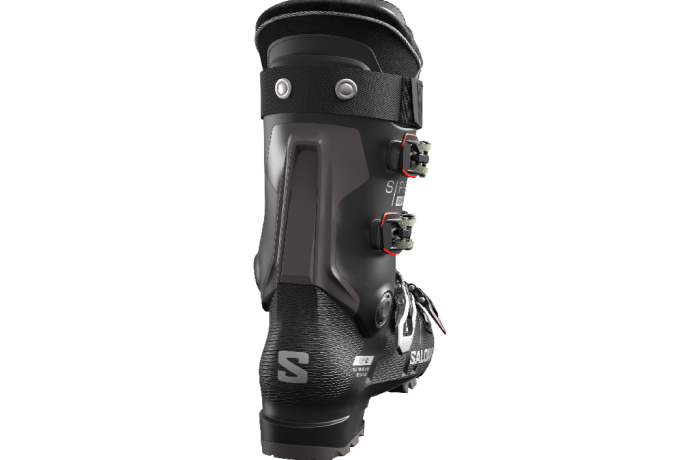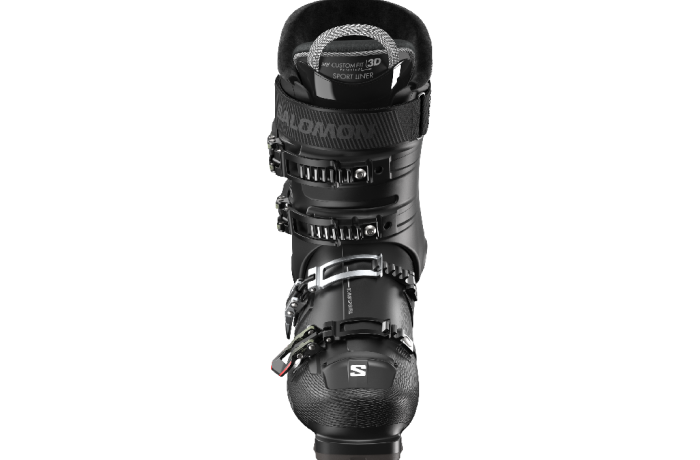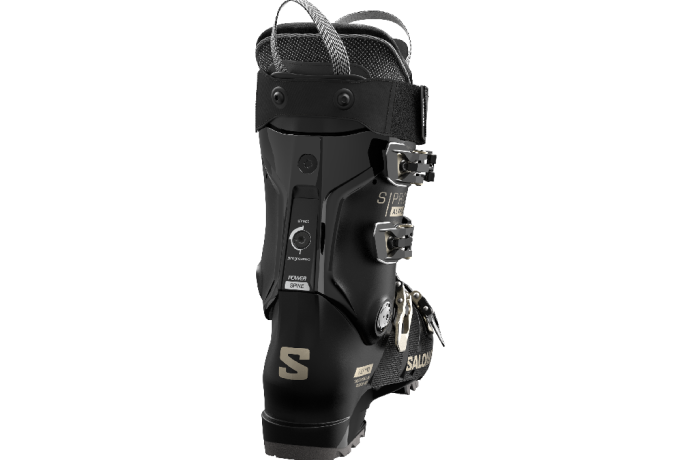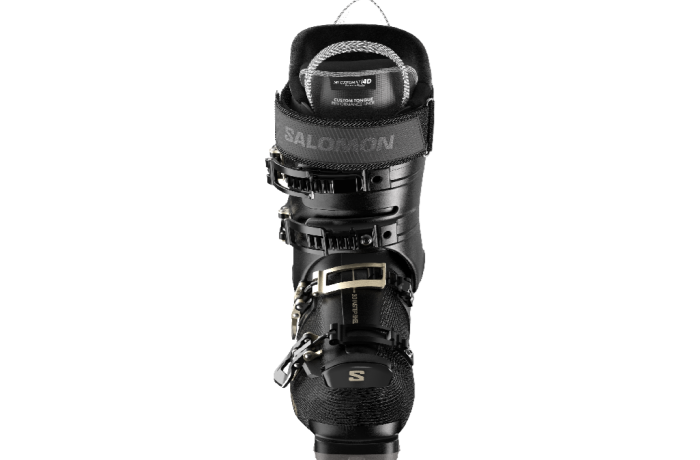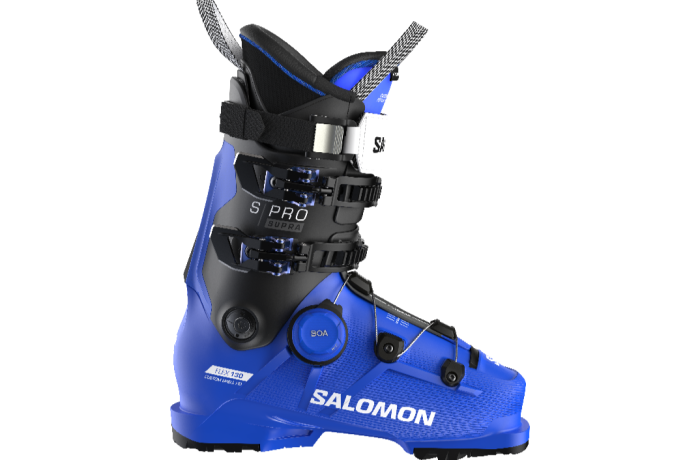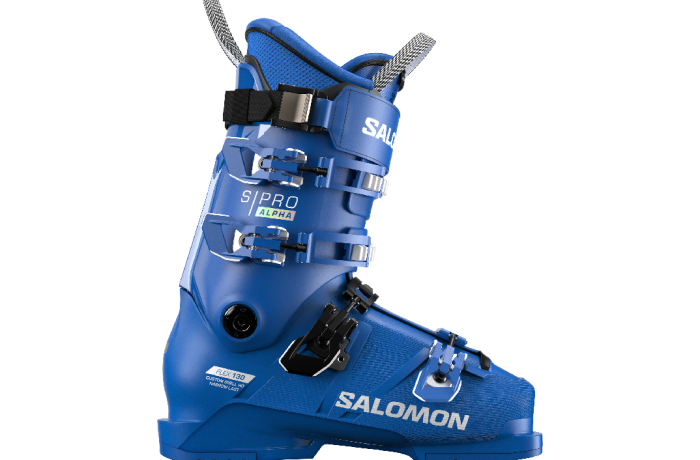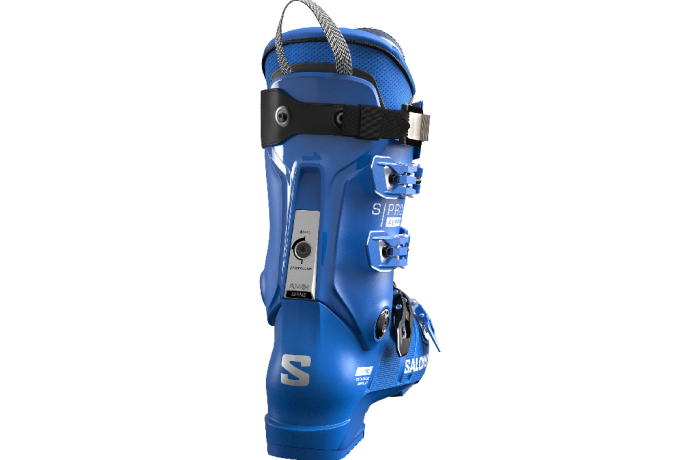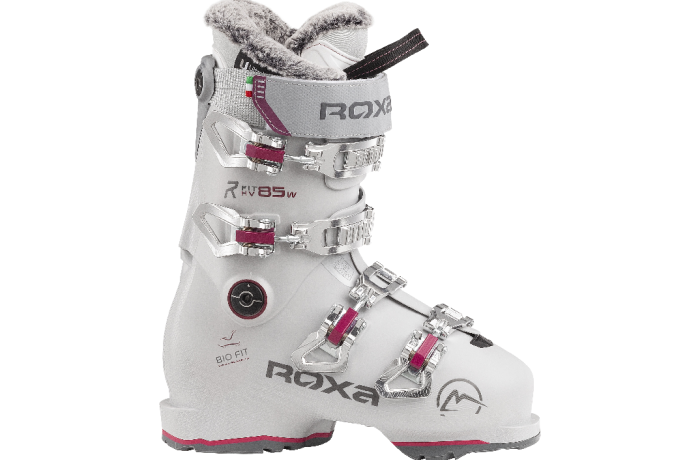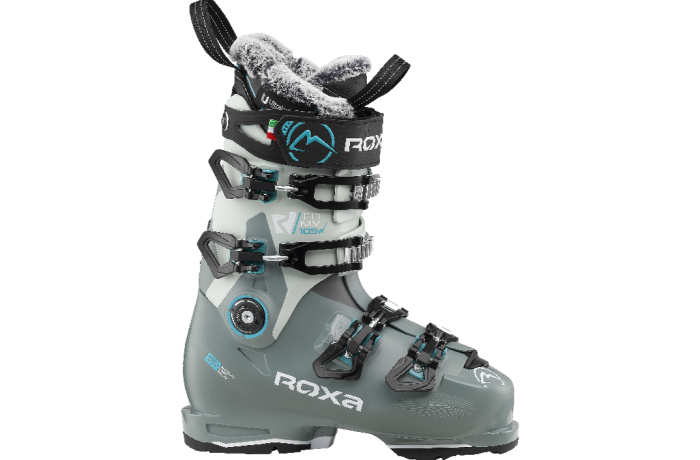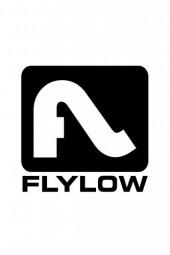Testers loved the Tecnica Mach BOA HV 105 W for its ample volume and plus-size curves, and that's without their huge appreciation for how the BOA closure system put a new spin on the Mach1 wide ride line-up. Testers said that it was an easy call for the thick-of-foot, thick-of-calf and good skiers looking to get into the thick of it off-piste or at high speeds, alike.
The toebox and forefoot fit of the Mach BOA HV rung the big girl bell for high volume, testers said. We score fit on a 1 to 5 scale where a 1 is as tight as a World Cup race boot and a 5 is as roomy as a ski boot gets. Testers gave a unanimous fit score of 5.0 to both the toebox and forefoot--and that doesn't happen very often. They said the fit shrunk down a little in critical control areas like the ankles and heel but not by much--this boot wants a chunky foot to fill its foyer, and well, its upstairs too. That next.
The cuff is first and foremost upright in its stance angle, testers agreed. That, and it's pretty tall on the lower leg also. On top of that the cuff circumference is big--built to wrap a thick calf comfortably. Add to those three elements a fourth variable--this boot is stout, according to testers who said it ran stiffer than the advertised 105-flex. These four upper cuff design elements combine to produce absolute joy for the big, tall skier with a thick leg who will find herself properly balanced and supported in a proper skiing stance, ready to attack the mountain without burning quads and jabby calves. On the flipside, those four elements combined for backseat-betty, wheelied-out thrill rides for shorter, lighter, more slender-legged testers--but this probably isn't their boot, anyway, so forget them.
Testers loved how well this boot held an edge, regardless of their morphology--this was a strong-skiing boot that did everything that they asked of it, from carving firm groomers to whittling through bumps and tracking up virgin pow. They thought it skied better than expected from a 105-flex, from a stability and power perspective, but said its quickness was nothing to complain about, either.
Testers thought that the boot's simple design with the added convenience of the BOA reel made it a convenience winner--in fact they gave its Convenience, Warmth and Features score a perfect 5.0 to match the one they gave it for its perfectly outsized, wide-last fit.
